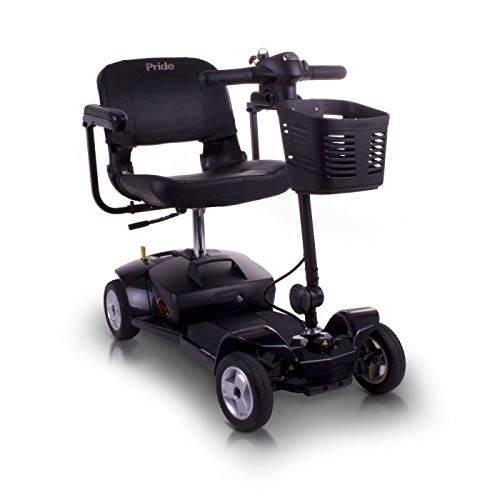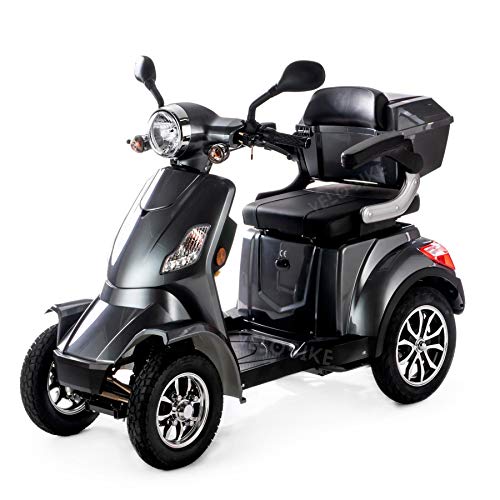5 Laws That Can Help The Mobility Devices Industry
페이지 정보
작성자 Lucretia 댓글 0건 조회 144회 작성일 24-11-27 09:05본문
 Fleet Management and Smart Mobility
Fleet Management and Smart Mobility Smart mobility provides alternatives to private cars and encourages carpooling. It also enhances sustainability by reducing pollution and traffic.
Smart mobility provides alternatives to private cars and encourages carpooling. It also enhances sustainability by reducing pollution and traffic.These systems require high-speed connectivity between devices and roads, as well as a centralized systems. They also require sophisticated software and algorithms for processing the data collected by sensors and other devices.
Safety
Many smart mobility solutions are developed to tackle a variety of urban challenges, including sustainability, air quality, and road safety. These solutions can help to reduce traffic congestion, carbon emissions, and facilitate access to transportation options for people. They can also help improve maintenance of the fleet and provide more convenient transportation options for customers.
The smart mobility concept is still in its infancy and there are a few hurdles that must be overcome before these solutions can be fully implemented. These include ensuring the safety of smart devices and infrastructure, developing user-friendly interfaces, and implementing strong data security measures. To encourage users to adopt, it's important to also understand the needs and tastes of different types of users.
A key feature of smart mobility is its ability to integrate with existing infrastructure and systems. Sensors can be integrated into vehicles, roads and other transport components to provide real-time data and enhance system performance. Sensors can monitor the weather conditions, health of vehicles and traffic conditions. They also can detect and report any issues with road infrastructure, such as potholes or bridges. These information can be used to improve routes, reduce delays, and reduce the impact of traveller.
Increased safety for the fleet is another benefit of smart mobility. These technologies can reduce accidents due to human error with advanced driver alerts and crash avoidance systems. This is particularly important for business owners who rely on their fleets to deliver products and services.
By enabling more efficient use of transportation infrastructure and vehicles Smart mobility solutions can reduce the amount of fuel used and CO2 emissions. They can also encourage the use electric mobility scooters for adults uk vehicles, which can lead to a reduction in pollution and cleaner air. Smart mobility can also provide alternatives to private car ownership and encourage public transportation.
As the number smart devices grows the need for a comprehensive system for protecting data is required to ensure privacy and security. This means creating clear guidelines regarding the types of data that are taken, how it's used, and who it is shared with. It also involves implementing effective security measures, regularly re-updating systems to protect against new threats, and ensuring that there is transparency regarding the handling of data.
Efficiency
There's no doubt that the urban mobility ecosystem is in need of a serious upgrade. Congestion, pollution and wasted time are just a few factors that can negatively impact business and quality of life.
Companies that can offer solutions to the problems of modern logistics and transportation are poised to benefit from the rapidly growing market. These solutions must also include intelligent technology that can help solve important issues such as transportation management energy efficiency and sustainability.
Smart mobility solutions are based on the concept of using a range technologies in cars and urban infrastructure to improve the efficiency of transportation and decrease emissions, accident rate and costs of ownership. These technologies generate a massive amount of data, so they need to be linked to one another and analyzed in real-time.
Fortunately, many of the technologies used in transportation have built-in connectivity features. Ride-share scooters, which can be unlocked and purchased using apps or QR codes autonomous vehicles, smart traffic lights are a few examples of such technology. Sensors, low-power wireless networks (LPWAN) cards and eSIMs are a way to connect these devices with each other and to a central system.
Information can be shared in real-time, and actions can be quickly taken to minimize issues like road accidents or traffic jams. This is made possible through the use of sensor data and advanced machine learning algorithms that analyse data to find patterns. These systems can also forecast future trouble spots and provide direction for drivers on how to avoid them.
A number of cities have already implemented smart mobility strategies to reduce pollution from air and traffic. Copenhagen for instance has smart traffic signs that prioritize cyclists during rush hour to cut down on commute time and encourage cycling. Singapore has also introduced automated buses that navigate designated routes using cameras and sensors to optimize public transportation services.
The next phase of smart mobility will be based on technology that is intelligent, such as artificial intelligence and massive data sets. AI will allow vehicles to communicate and interact with each other, as well as the surrounding environment. This will decrease the need for human drivers while optimizing the route of vehicles. It will also facilitate smart energy management by predicting renewable energy production and assessing the possible risks of leaks or outages.
Sustainability
Inefficient traffic flow and air pollution have plagued the transport industry for a number of years. Smart mobility provides a solution to these issues, and offers a range of benefits that enhance the quality of life of people. For instance, it permits people to use public transportation systems instead of driving their own cars. It makes it easier for users to find the best route to their destination and reduces congestion.
Moreover smart mobility is also green and offers alternative energy sources that are sustainable to fossil fuels. These solutions include ride-hailing and micromobility. These solutions also permit users to utilize lightweight electric mobility scooter with seat for adults folding mobility scooter (image source) vehicles and integrate public transportation in the city. They also decrease the need for private cars as well as reducing CO2 emissions, and improving air quality in cities.
The digital and physical infrastructure needed for the deployment of smart mobility devices can be a bit complicated and expensive. It is crucial to ensure that the infrastructure is safe and secure and is able to stand up to attacks by hackers. Additionally, the system should be able to meet user needs in real time. This requires a huge degree of autonomy in decision making which is challenging because of the complexity of the problem space.
A wide range of stakeholders also participate in the development of smart mobility solutions. Transportation agencies as well as city planners and engineers are among them. All of these stakeholders must be able work together. This will enable the development of more sustainable and better solutions that benefit the environment.
The failure of sustainable, intelligent mobility systems, unlike other cyber-physical systems, such as gas pipelines, could have serious economic, social and environmental effects. This is due to the necessity of matching demand and supply in real-time, the storage capabilities of the system (e.g., energy storage), and the unique mix of resources that comprise the system. The systems must also be able handle a high level of complexity as well as a variety of inputs. This is why they require a completely different approach driven by IS.
Integration
With the growing emphasis on safety and sustainability fleet management companies must embrace technology to meet the new standards. Smart mobility improves integration efficiency, automation, and safety, as well as boosting performance.
Smart mobility includes a variety of technologies and could refer to anything with connectivity features. Ride-share scooters, which are access via an app are a good example. Autonomous vehicles and other transport options have also emerged in recent years. The concept can also be applied to traffic lights and road sensors as well as other components of the city's infrastructure.
Smart mobility seeks to develop integrated urban transportation systems that increase the quality of life of people and increase productivity, reduce costs, and also have positive environmental impacts. These are often lofty goals that require collaboration between city planners and engineers as well as experts in technology and mobility. In the end, the success of implementation will depend on the particular circumstances in each city.
For example, it may be necessary for a city to build a wider network of charging stations for electrical vehicles or to improve the bike lanes and pathways for more secure biking and walking. Also, it could benefit from traffic signal systems that adjust to changing conditions, reducing the amount of traffic and delays.
Local transportation companies could play a crucial role in coordination of these initiatives. They can develop apps that let users buy electric mobility scooter tickets for public transport, car-sharing and bicycle rentals on one platform. This will make it easier to get around, and also encourage people to select more sustainable options for transportation.
MaaS platforms also provide more flexibility commuters can move around the city, based on their needs at any given point. They can opt to rent an ebike for a longer trip or hire a car share ride for a quick trip into the city. These options can also be combined into one application that shows users the complete route from door to door, and makes it easy to switch between different modes of transport.
These integrated solutions are just the beginning of the road in terms of implementing smart mobility. In the future cities will have to connect their transportation networks, and provide seamless connections between multimodal journeys. Data analytics and artificial intelligence can be used to optimize the flow of goods and people and cities will need to support the creation and development of vehicles that are able to communicate with their surroundings.
댓글목록
등록된 댓글이 없습니다.

